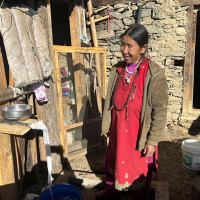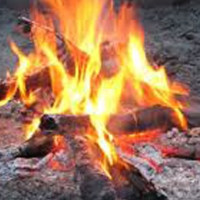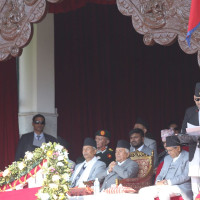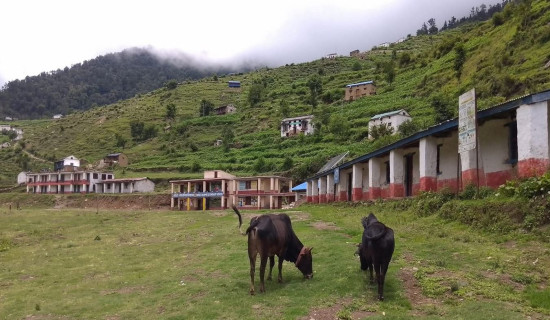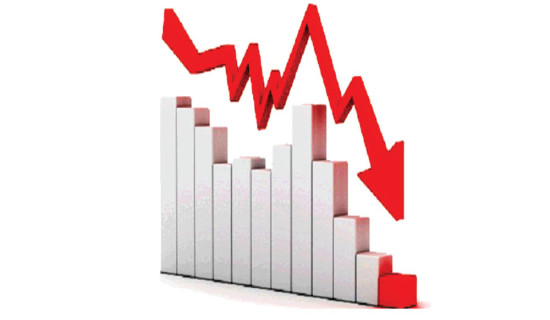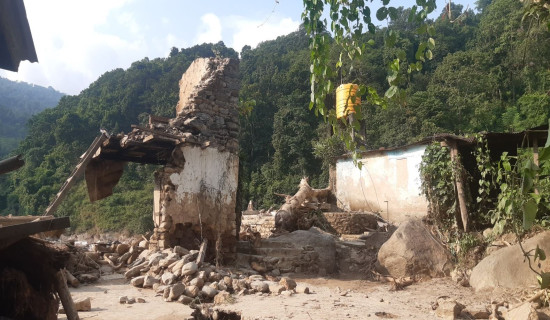- Monday, 15 December 2025
Take Urgent Action Against Air Pollution
The air quality of Kathmandu has drastically deteriorated in recent times, posing health risks to its citizens. Although it is not impossible to contain air pollution, it is a daunting task. Kathmandu can recover its clean air and guarantee a healthy future for its citizens through community efforts, public awareness campaigns, and policy reforms. Millions of people across the nation are affected by air pollution. Once a serene valley, Kathmandu has become one of the world's most polluted cities. Air pollution is a serious public health emergency that requires urgent action.
The Air Quality Index (AQI) frequently exceeds dangerous thresholds, indicating that air pollution in Kathmandu has reached an alarming level. Toxic gases such as nitrogen oxides, sulfur dioxide, carbon monoxide, and particulate matter (PM2.5 and PM10) are the most dangerous air pollutants in the city. Particularly in winter, the thick haze that blankets the valley is a visible reminder of how the air quality of Kathmandu has deteriorated in recent times. Air quality thresholds recommended by WHO are frequently exceeded in Kathmandu, placing it among the most polluted cities in the world. The situation is further exacerbated by the valley's unique topography, which traps pollutants and stops them from dispersing, exposing its residents for prolonged periods.
Factors
There are a number of factors that contribute to the air pollution in Kathmandu. Air pollution has been greatly increased by the quick rise in the number of vehicles in recent times. High concentrations of carbon monoxide and nitrogen oxides are released into the atmosphere by diesel-powered public transportation. Large amounts of smoke and harmful gasses are released by companies and brick kilns that operate in and around the valley and these industries lack appropriate pollution control methods. The city’s ongoing construction boom, characterised by poorly regulated projects and unpaved roads, generates vast amounts of dust and particulate matter.
Hazardous gases are released into the atmosphere when garbage, especially plastic and organic materials, is burned outdoors. This practice is common in Kathmandu because of inadequate waste management systems. The shrinking green spaces in and around Kathmandu reduce the natural ability of trees to filter pollutants. Therefore, urban expansion at the cost of forests has further exacerbated air quality. Air pollution has devastating health consequences for the country’s residents. Lung cancer, asthma, and chronic obstructive pulmonary disease (COPD) have all been related to long-term exposure to air pollution. People with pre-existing medical conditions, the elderly, and children are particularly vulnerable to the effects of air pollution.
There has been a direct link between air pollution and increased incidence of strokes, heart attacks, and impaired lung development in children. Because of the stress that comes with constant exposure to poor air quality, the toxic air has even been linked to higher risks of mental health conditions such as anxiety and depression. Air pollution affects the general quality of life in addition to physical and mental health. Air pollution compelled people to spend more time indoors, wear masks outside, and engage in less physical activity. The economic burden of medical expenses due to illnesses brought on by pollution further strains families and the healthcare system, particularly in resource-limited countries.
It is important to have a comprehensive strategic plan to properly handle air pollution issues. Therefore, a plan to address the root causes of pollution and effective mechanisms to implement long-term strategies in place that support sustainable urban living is required. The primary concern of air pollution in the valley is vehicular emission. Excessive air pollution is a combined result of the rapid rise in private vehicles, inadequate maintenance, and outdated technologies. Therefore, the government must develop and promote an effective public transportation system to address this issue.
The government should promote electric vehicles (EVs) through subsidies, the construction of additional charging stations, and incentives for EV purchases are crucial in this endeavour. Similar measures should be directed to phasing out outdated diesel-powered public transportation, enforcing tighter pollution regulations for all vehicles, and ensuring routine monitoring. Large-scale construction projects, industry, and brick kilns are the main sources of air pollution in the valley. Hence, industries should be encouraged to implement pollution control devices at their premises and adopt greener technologies.
Responsible waste disposal
The frequent open burning of waste, particularly plastics and organic materials, releases toxic chemicals into the air. Establishing more waste collection points and encouraging responsible waste disposal can be the solution. Local government should ban open burning of garbage and introduce alternative waste disposal methods and the public should be made aware of the hazards of burning waste and the benefits of sustainable waste management. Trees and vegetation not only enhance the general quality of the air but also effectively filter air pollutants. Thus, green areas in the valley should be expanded to prevent air pollution in the long run.
Similarly, more parks, green spaces, and tree-lined streets should be developed all across the city. The government alone cannot solve air pollution issues; individuals and societies must also come forward to actively participate in this endeavour. Large-scale public education and awareness campaigns can help change people's behaviour, which eventually leads to cleaner air. The journey to cleaner and breathable air is a daunting task, but it is a fight worth taking up for the well-being of current and future generations. It is still not too late to make Kathmandu a city where people can prosper in a safe and breathable environment.
(Dr. Lohani is the executive director at the Health Concern. lohanis@gmail.com)




